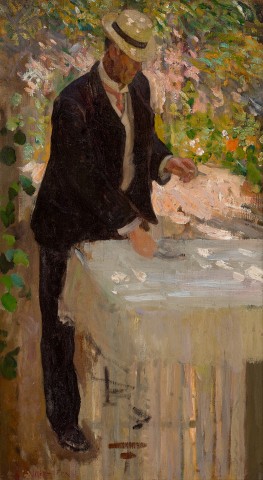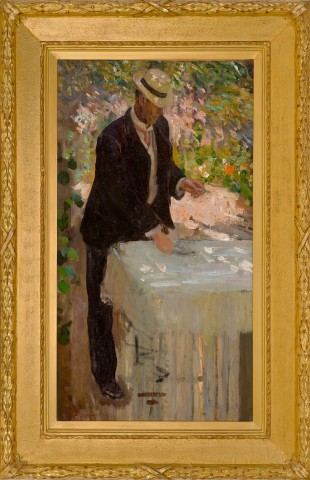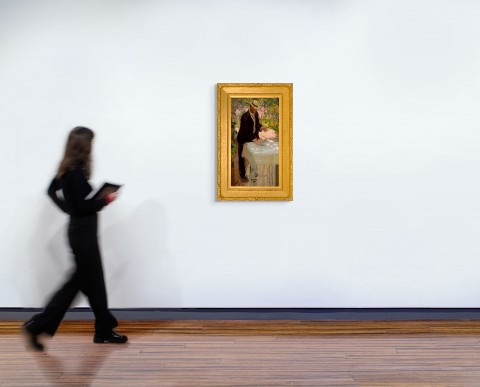FIGURE STUDY FOR THE ARBOUR, c.1909 – 10
EMANUEL PHILLIPS FOX
oil on canvas
74.0 x 40.5 cm
signed lower left: E Pillips Fox [sic]
Private collection, Brisbane
Sotheby’s, Melbourne, 25 August 1997, lot 260 (as ‘The Waiter’)
Private collection, Melbourne
Deutscher~Menzies, Melbourne, 25 April 1999, lot 67A
Private collection, Melbourne
Deutscher~Menzies, Melbourne, 20 August 2001, lot 47
Private collection, Tasmania
Deutscher and Hackett, Melbourne (private sale)
Private collection, Melbourne, acquired from the above in 2016
E. Phillips Fox and Ethel Carrick Fox, Deutscher Fine Art, Melbourne, 13 November – 6 December 1997, cat. 16 (illus. in exhibition catalogue, p. 21)
Zubans, R., E. Phillips Fox: His Life and Art, The Miegunyah Press, Melbourne, 1995, cat. 322, pp. 27, 225 (as 'The Waiter')
The Arbour, 1910, oil on canvas, 190.5 x 230.5 cm, in the collection of the National Gallery of Victoria, Melbourne
E Phillips Fox Arbour_CMYK copy.jpg
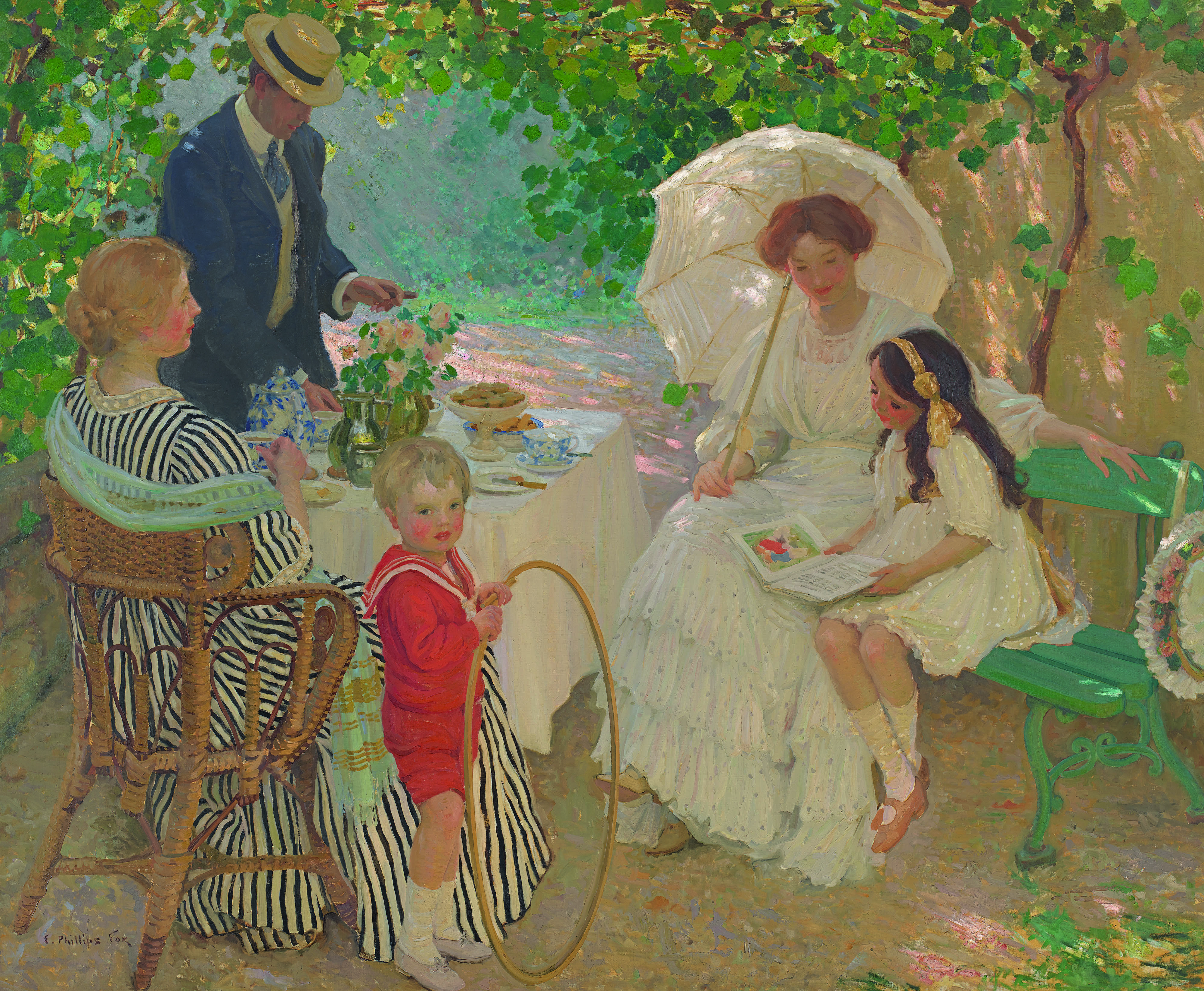
Colour and the varied effects of light were central to the art of Emanuel Phillips Fox. Indeed, as Lionel Lindsay recalled, ‘He once told me that he no longer saw anything except as a colour-sensation… His gamut of greens is extraordinary fine and varied, and the purity of his colour still holds the sunlight imprisoned in the pigment.’1 While he had been trained in an academic style, Fox always enjoyed the freedom of working outdoors, and the influence of French Impressionism – particularly as articulated by Monet and Renoir, whose work was easily accessible during Fox’s years in Paris – encouraged this, feeding in to what has been described as his natural ‘inclination towards colour, light and optical experience.’2
The influence of Monet and Renoir is also apparent in the so-called déjeuner paintings that Fox made in the early twentieth century – Al Fresco, c.1905 (Art Gallery of South Australia); The Arbour, 1910 (National Gallery of Victoria); and Déjeuner, c.1910 – 11 (University of Queensland Art Museum) – each of which depict family groups gathered around a meal in intimate outdoor settings. As Fox scholar, Ruth Zubans, observed, ‘In style there are considerable differences… [but] in attitude… the mood of optimism, easy sociability and warm humanity are qualities shared by the artists.’3
E Phillips Fox Al Fresco (AGSA) copy.jpg
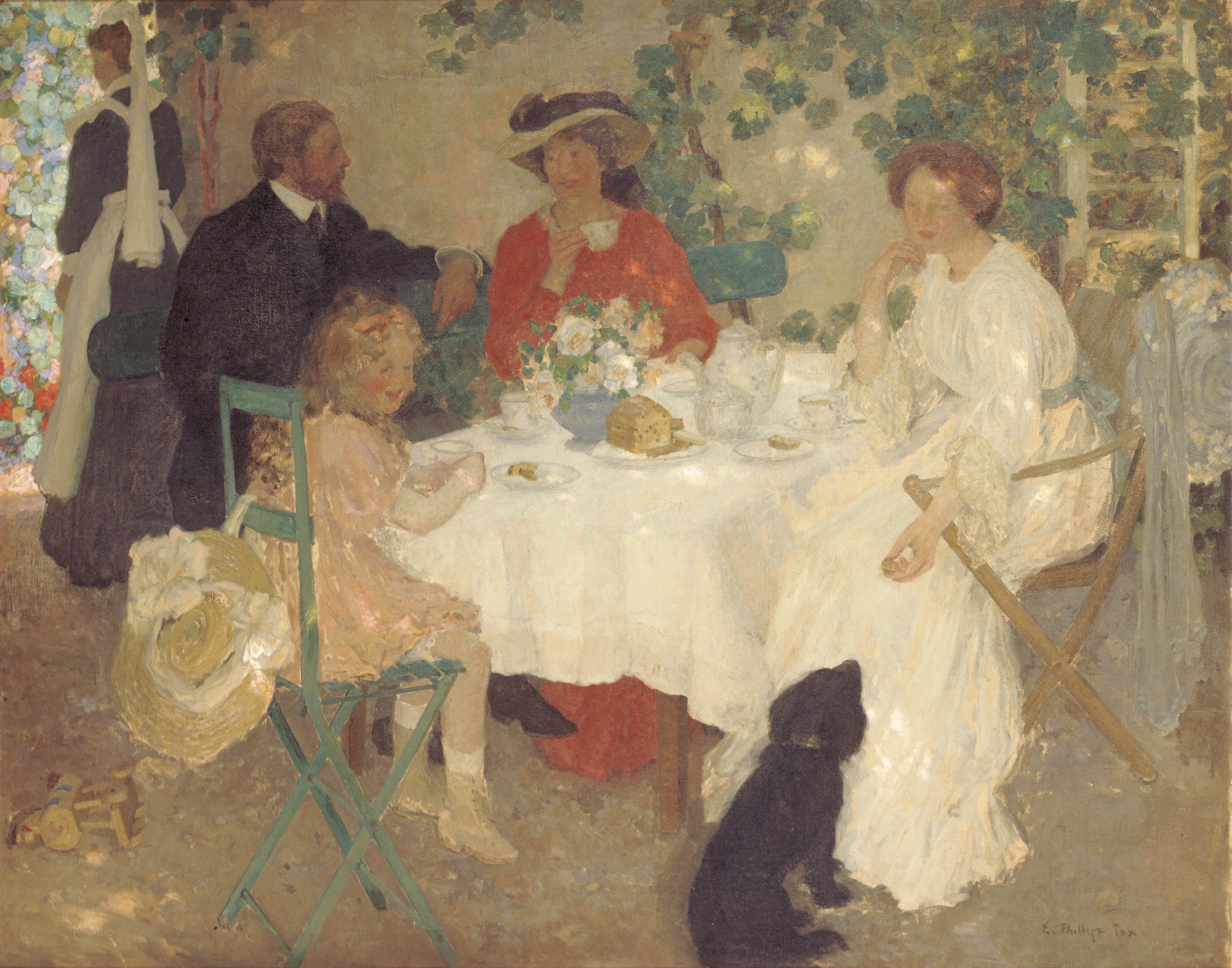
Fox’s working method typically involved the production of numerous studies and the largest of these three paintings, The Arbour, was no exception to this practice. In addition to quick compositional sketches in pencil and charcoal which show him experimenting with the placement of figures and refining the depiction of particular subjects, Fox produced a series of more detailed studies in oil. An earlier small head study of the artist’s nephew, Leonard (Len), for example, which was made in 1908 during the artist’s extended stay in Melbourne, served as the basis for the boy in red and the young girl is thought to be modelled on his sister, Louise.4 While the identity of the adult sitters is not clear, given this focus on family it is possible that they are based on the artist’s wife, Ethel Carrick Fox – also a noted artist – and the children’s parents, Fox’s brother David and his wife Irene.
Depicting a standing man, stylishly attired and cigar in hand, this painting is the largest study known to have been made for The Arbour and although it was previously referred to as The Waiter, it is clear that the figure is a member of this intimate party rather than staff. Fox describes the details of his clothing, pose and attitude, most of which are transcribed with little variation to the final painting, and his focus on the representation of colour and light – and unrivalled ability to describe in paint the effect of dappled light shining through foliage – is also on full display. While much of this painting is ‘finished’, aspects of it have a work-in-progress quality that imbues it with a freshness and palpable sense of energy. Here, brushstrokes communicate not only the physical making of the painting but something of the thinking involved in its creation.
1. Lindsay, L., ‘E. Phillips Fox’, Art in Australia, series 1, number 5, 1918, cited in Zubans, R., E. Phillips Fox, National Gallery of Victoria, Melbourne, 1994, p. 1
2. Zubans, ibid., p. 3
3. Zubans, R., E. Phillips Fox: His Life and Art, The Miegunyah Press, Melbourne, 1995, p. 126
4. Fox, L., E. Phillips Fox and his family, self-published, Potts Point, 1985, p. 68
KIRSTY GRANT
